Utahceratops gettyi was a fairly large chasmosaurine ceratopsian that grew to a length of about seven metres and a mass of over two tons. As its name suggests, it was discovered in Utah, in the fossil-rich Kaiparowits Formation of the Grand Staircase–Escalante National Monument. In 2017, the monument’s size was reduced by half in order to allow gas and oil and mining companies to exploit it, which would have destroyed countless fossils in the process. Happily, this inane and catastrophic decision was halted by presidential order in 2021, so we can all look forward to more exciting paleontological finds from that region.
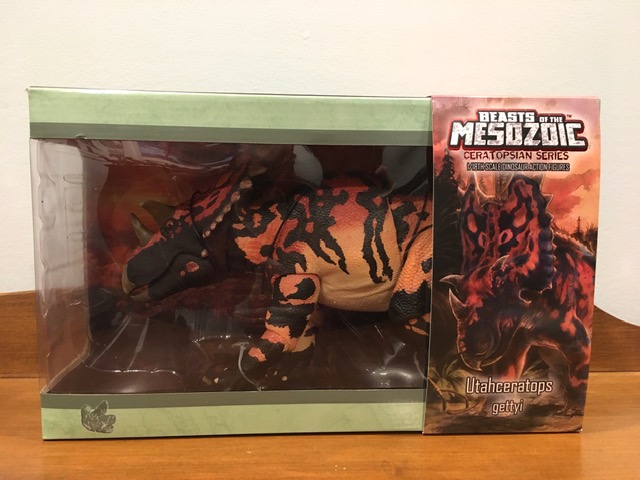
Utahceratops is my second ceratopsian from Creative Beast Studio’s Beasts of the Mesozoic series, the first being Spiclypeus. Like the latter, the packaging for this 1:18 scale figure features some lovely artwork by the talented Shannon Beaumont. The Utahceratops is walking placidly through a forest at sunrise or sunset. Sitting on its frill and back are a couple of Mirarce, much like oxpeckers sitting on the backs of large African mammals, although presumably just for a ride as opposed to parasitizing the ceratopsian.

The back of the box shows all the genera from the third wave of BotM ceratopsians and a brief description of Utahceratops, while the insert depicts a forest clearing at either sunrise or sunset. And of course, there is a collectible card with Beaumont’s artwork on one side and the same description on the other.

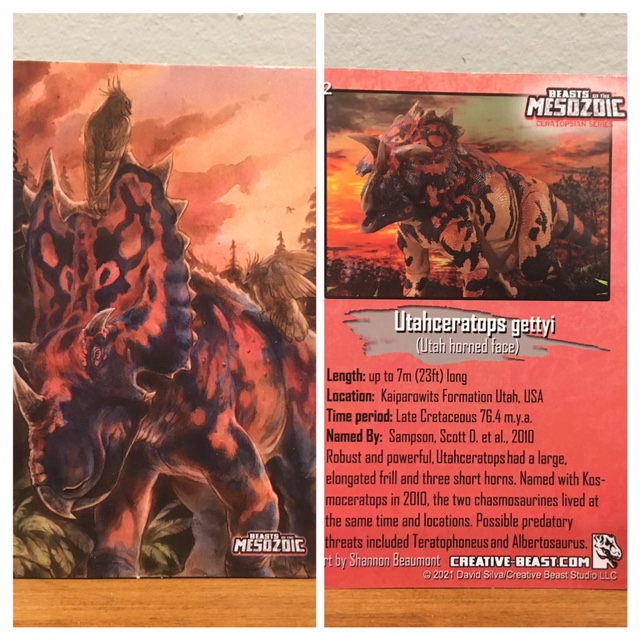
The first thing I did upon removing this figure from its packaging was to bathe it in plenty of hot water so as to loosen up all the joints. Attaching the tail required a good amount of force and patience, which makes me somewhat trepidatious about the BotM Tyrannosaurus rex that is slated for release this fall. Getting that humongous tail on will probably be even more challenging. But I’ll succeed. 🙂
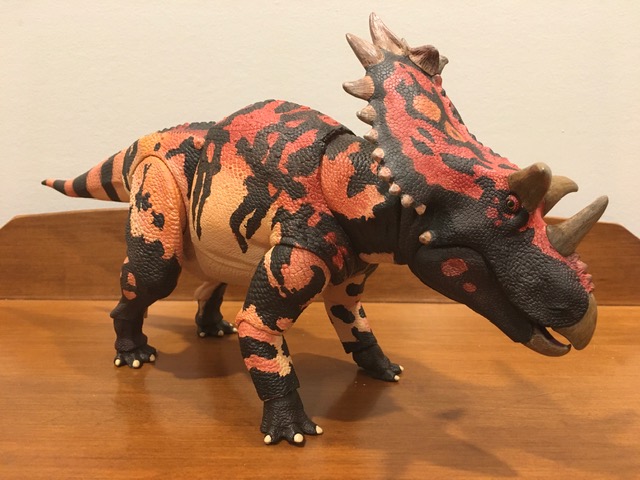
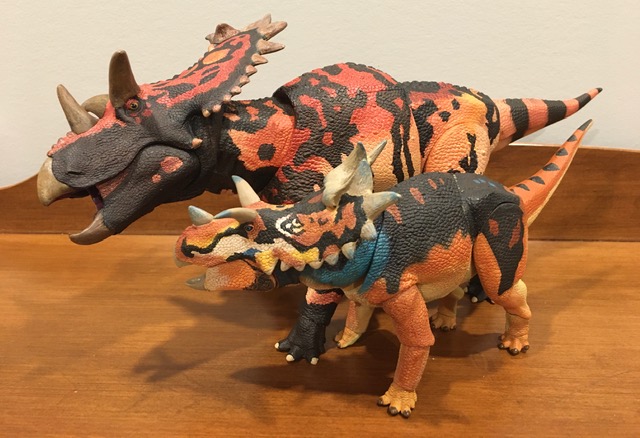
Ye gods, what a titan this Utahceratops is! With its head and tail held straight out and its limbs straightened, it measures around 36 cm long, 9 cm wide at the frill, and 19 cm tall at the tips of the topmost epiparietals. It easily dwarfs the Spiclypeus, its Kaiparowits contemporaries Kosmoceratops and Nasutoceratops, and many of the other BotM ceratopsians. The only ones with a body mould bigger than this one are the Torosaurus and the adult Triceratops. It only just manages to squeeze into the area dedicated to ceratopsians in my display case, and is now the biggest of all denizens dwelling behind those glass doors (although bigger ones reside on top of the cabinet). Also quite hefty to boot. You know, I seriously considered getting the Torosaurus instead, but now I’m very relieved that I didn’t. Just wouldn’t have had the space for it.
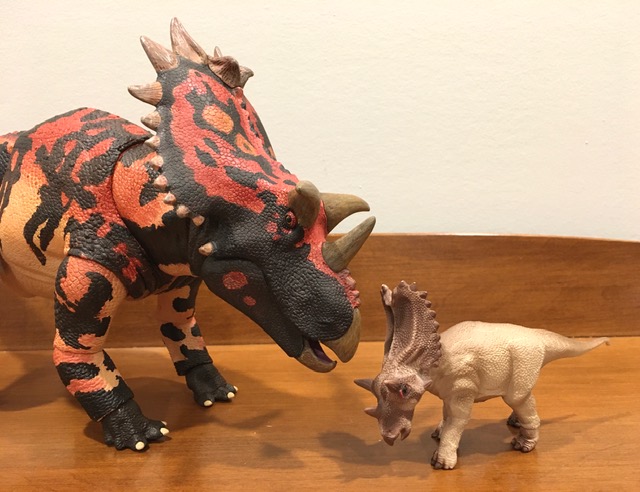
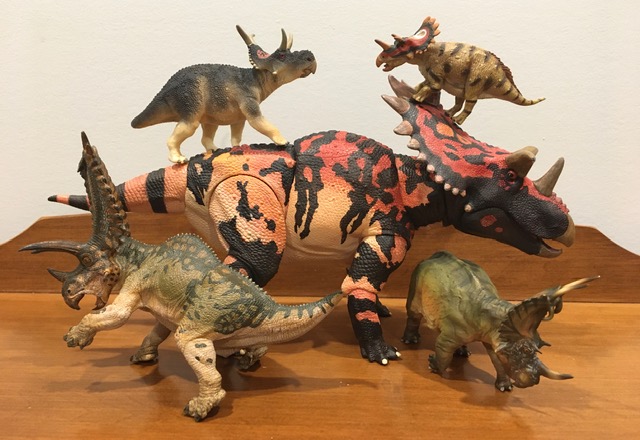
The Utahceratops‘ colour scheme was inspired by that most famous of venomous lizards, the Gila monster of the southwestern United States. However, some liberties were taken to make it look much more vivid. The body is done up in varying shades of orange ranging from deep red-orange on the back to a very pale peach on the underside. Splashed over them is an elaborate pattern of black markings. The tail is decorated with straight black stripes and the feet are entirely black with light beige claws. The head is black and red-orange with greyish-brown for the beak, horns, and epiparietals, dark red for the tissue connecting the jaws, light purple for the inside of the mouth, off white for the teeth, and light orange and glossy black for the eyes. As with most of the BotM ceratopsians, this one boasts an elaborate pattern on the front of its frill, complete with orange eyespots. The back of the frill features a less fancy pattern, but still impressive nonetheless. Indeed, this is a very striking and attractive paintjob overall, and it’s one of the factors that prompted me to caving in and buying this particular beast.
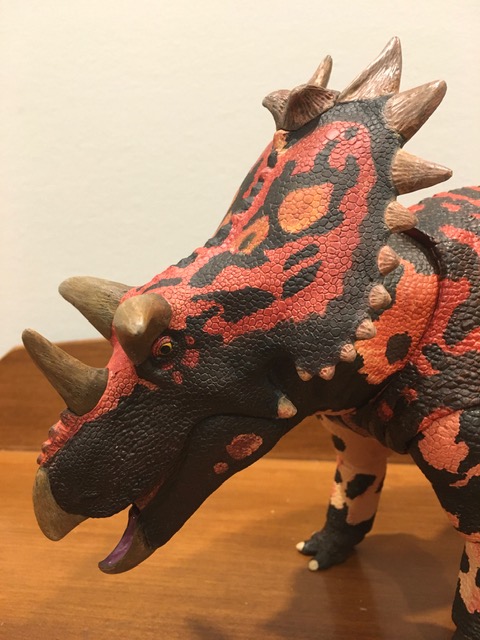

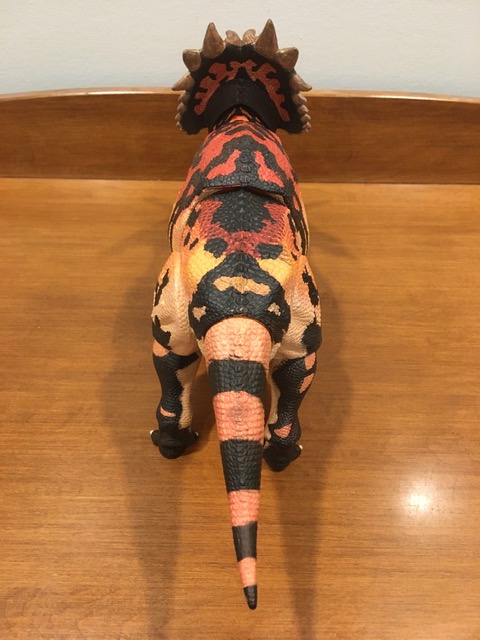
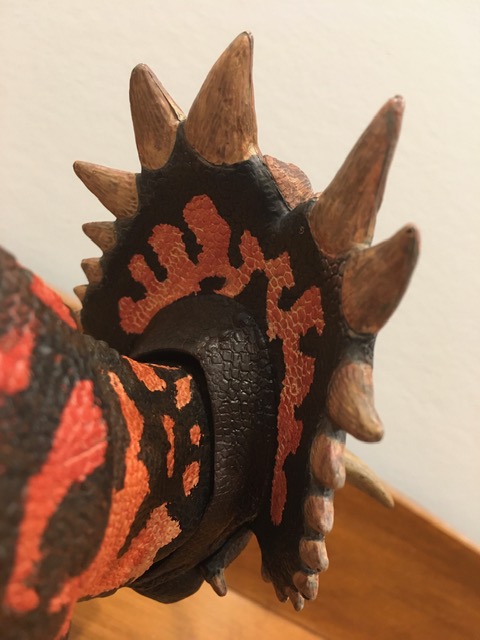
The articulation here is the same as on all the other BotM ceratopsians (save for maybe the Psittacosaurus?). The mouth opens, the tongue can wiggle, the head, neck, shoulders, midsection, hips, tail, wrists, wrists, and hind feet are ball-jointed; the elbows, knees, and ankles have combination hinge and swivel joints. Again I must emphasize the need to expose any BotM figure to a controlled heat source upon removing it from the packaging in order to loosen up the joints a bit and avoid the risk of breakage–although David Silva has been very good about sending out replacement limbs to those who require them. Once the joints have been sufficiently exercised, the Utahceratops can achieve quite a range of dynamic, realistic, or unusual poses. I was even able to get it in a rearing pose, although it’s so front-heavy that I’d never leave it like that.


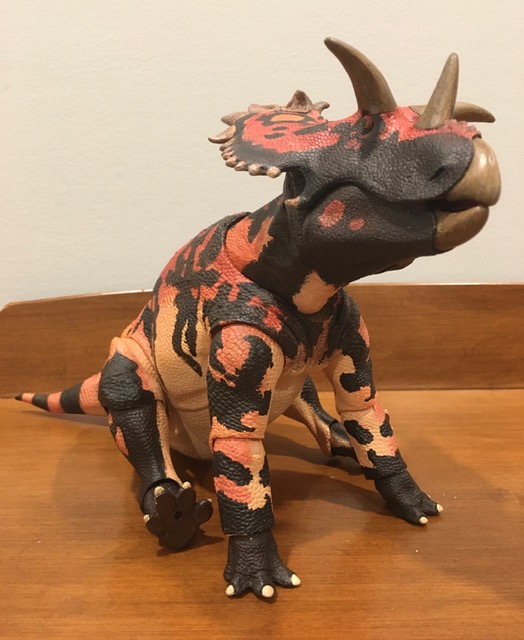
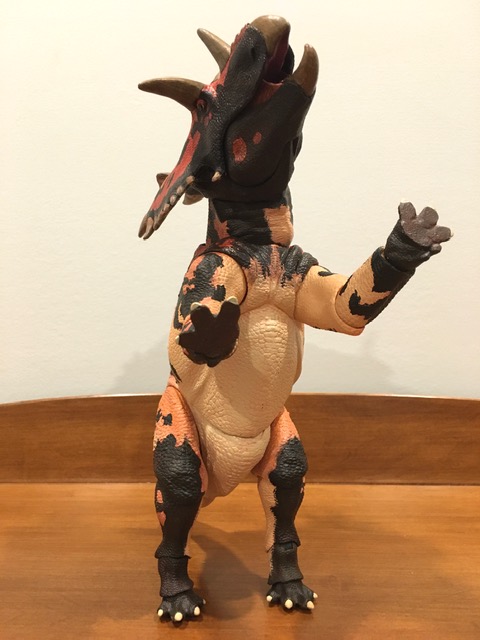
Similarly, the skin texture is more or less the same among these figures: lots and lots of scales ranging from small ones on the head to larger ones on the body, along with subtle rows of small rounded osteoderms running along the back and flanks and a single row of larger keeled osteoderms running down the length of the spine. The beak, horns, and epiparietals are covered in very fine grooves. Wrinkles are kept to a minimum and serve mainly to denote the very impressive musculature in the neck, limbs, and torso. Visible seam lines run horizontally along the back, but they’re not as glaring as they would be on a non-articulated figure.
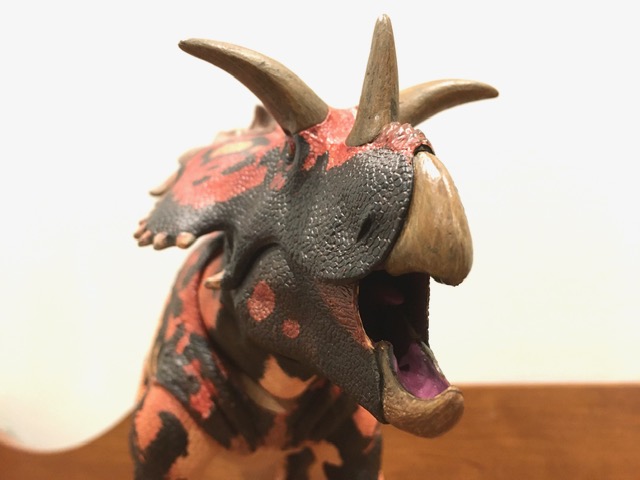
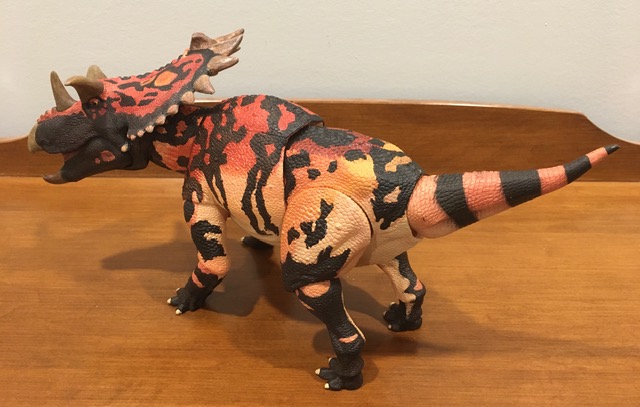
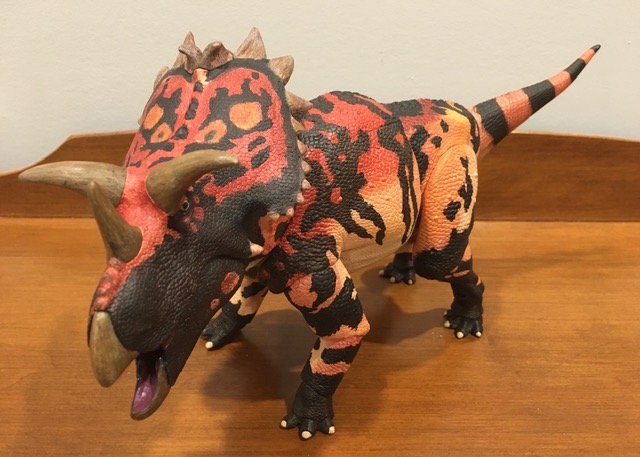
The Utahceratops‘ feet have the correct arrangement of digits and claws, and thanks to their articulation, they can be positioned facing slightly outward just as we now know they were in life. The large frill is widest at the squamosals, yet narrows slightly toward the top. Triangular epiparietals jut out from the edges with the very largest and pointiest at the top. However, the two central epiparietals are short, squat, and facing away from one another. As you can see from the comparison shot below, it really is easy to distinguish chasmosaurines by their frills alone once you know what to look for.

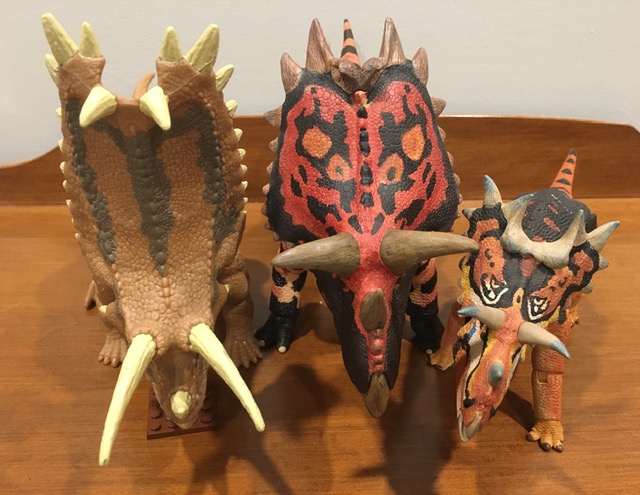
The single nasal horn is quite long and positioned far back on the snout, closer to the eyes than the nostrils. The postorbital horns are curved, fairly short, and point out to the sides as opposed to the very long, forward-facing ones on Pentaceratops, Torosaurus, and Triceratops. This may indicate that Utahceratops‘ horns and frill were more for display and recognition than defense, although it probably would have used them for the latter if it came to that. Its main enemy would have been the tyrannosaurid Teratophoneus, which is slated to receive its own BotM figure in 2023. I reckon I’ll probably end up getting it so that my Utahceratops has something to fight!
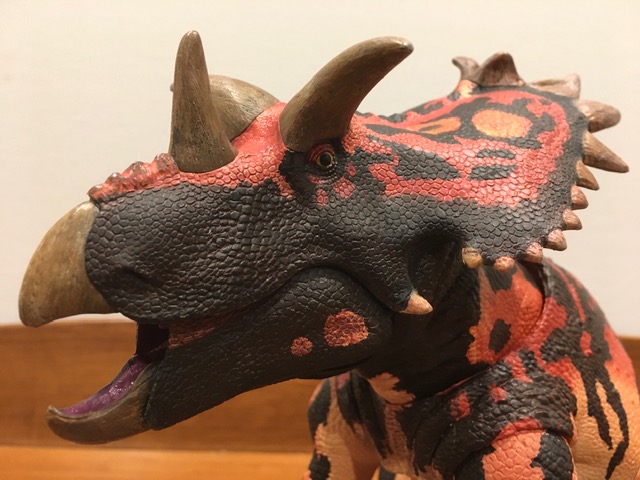
If there is one major inaccuracy about this beast, it is its sheer size compared to many of the others in the series. Although Utahceratops is the largest known one from the Grand Staircase, it was not a particularly gigantic one (its estimated length is six to seven metres) and would not have dwarfed Kosmoceratops and Nasutoceratops as much as these figures suggest. A more accurate size comparison between the three can be seen here. Size discrepancy is something of an ongoing issue in the BotM line; the upcoming Tarbosaurus shares a body with the Albertosaurus, Daspletosaurus, and Gorgosaurus despite the fact that the former was much bigger than that terrible trio. But such is bound to inevitably occur as a result of the mould sharing that is so necessary for BotM. And personally, I’ve never been terribly concerned with scale anyway.
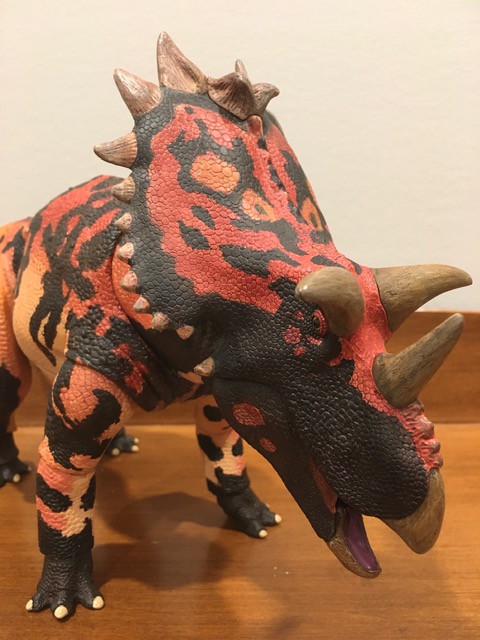
Overall, I’m really happy with Creative Beast’s Utahceratops. Its immense size alone is enough to impress anyone, but the level of sculpting detail and meticulous research that has clearly gone into it is totally top notch. Toss in the impressive articulation and the fact that it doesn’t enjoy anywhere near as much fame and as many toys as Triceratops or Styracosaurus or Pachyrhinosaurus and you have a solid winner. Mind, it certainly doesn’t come cheap regardless of the vendor, and it will absolutely take up a vast chunk of space on your shelf. As long as you’re okay with that, then this is one ceratopsian figure you’re sure to enjoy!
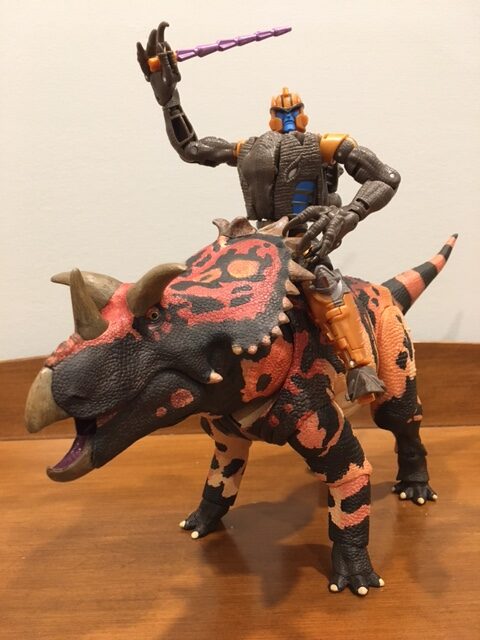
Support the Dinosaur Toy Blog by making dino-purchases through these links to Ebay and Amazon. Disclaimer: links to Ebay.com and Amazon.com on the Dinosaur Toy Blog are often affiliate links, when you make purchases through these links we may make a commission

Great review! The CollectA version was good, but this is a totally different beast.
Thanks!
It reminds me of Darth Maul
It really does now that you mention it. That honestly did not occur to me during the writing.
The face of the BOTM Kosmoceratops REALLY reminds of Darth Maul.
What a magnificent figure! Honestly, I like almost everything about all of the BoTM figures, what I perhaps don’t like are the excessively ornate painting details. However in particular the BoTM utahceratops is the best of its kind in the toy dinosaur market. Magnificent and extensive review as I always like it.
Thank you!